In Friday’s information-packed panel “Middle Grade and YA Graphic Novels Publishing: Behind the Scenes,” four editors offered insight into how children’s graphic novels are developed. The discussion revolved around how publishers seek out new talent and projects, book design, book marketing, and future directions.
Librarian and CBC advocate Carla Riemer moderated a group that included Mark Siegel (First Second), Tracy Hurren (Drawn & Quarterly), Andrew Arnold (Harper Alley), and Kim Lauber (Abrams ComicArts).
What was apparent from the first question was the emphasis these four publishers placed on author-driven content. Each editor spoke of providing platforms for new and established voices and styles that addressed real world concerns.
What Publishers Look For And Where They Look
First Second’s Siegel kicked off the discussion, tying the name of his publishing house to “going after firsts” and “opening doors.”
“We want to be exploring new avenues, finding the graphic novels that have not really been thought of before.”
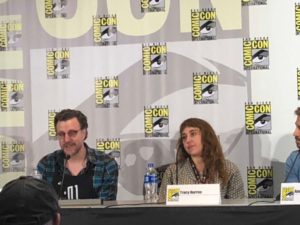
Drawn & Quarterly, long known for showcasing talent outside the mainstream, took a more refined approach.
“We’re looking for a very singular, idiosyncratic styles of book that can only be told by that particular cartoonist,” said senior editor Hurren.
Abrams, the grandfather of the publishing houses represented, searched for creators who had human interest stories to tell or whose works matched the firm’s aesthetic. Arnold, editorial head of HarperCollins new children’s graphic novel imprint Harper Alley, said he would be “hitting the ground and going to shows, whether it’s MoCCA or TCAF or SPX” to scope out talent for his firm. Hurren explained how shows and conventions helped.
“What’s nice about comics is, because as you mentioned like at the different shows and conventions, you can usually watch a cartoonist from pretty early on in their career. And likewise with the Internet. So before someone is necessarily ready to be publishing a book you can already be paying attention to their artwork. And when you see something you like, you can reach out and begin to foster relationships so that by the time that cartoonist has a bit more experience and is maybe ready to publish a book, you’re waiting.”
On the other hand, Siegel used good, old-fashioned networking to expand the talent pool at First Second. He also snagged a renowned creator using this method.
“Oftentimes when I sign up an artist they tend to come with their web of friends and people that they want to bring along. I remember signing up Derek Kirk Kim, and he said ‘You gotta check out my buddy, Gene.’ And it was Gene Yang. So a lot of good people have come that way, by referral.”
The internet and social media provided a rich forum in which editors could trace the evolution of a creator. Siegel called webcomics the new “proving ground.” Arnold outlined his approach of researching a creator online.
“I’ve been blown away by it, all the different outlets whether it’s Instagram, Twitter or whatever. There’s just so much stuff out there to check out. When you’re looking, when you see a piece of art that you’re really drawn to, I’m going to want to click on a person’s page and go through all the other images they have on there. Then I’m looking at their comics, and I’ll read it. I’ll see how their storytelling skills are and see if they sort of align with my taste.”
Why Design and Marketing Are Important
The meat of the panel discussion centered around book design and book marketing, of which editors maintained very strong opinions. While the editors championed their authors and allowed them creative license with content, the buck stopped at marketing and cover design. Siegel explained:
“My philosophy about covers has pretty radically changed in 15 years working for First Second. At first I really was kind of with the purists. The artist gets what the artist wants. We went a few seasons like that, and I sometimes override any feedback from sales, and I’d be like ‘Nope.’ So I’m not going to name names, but you know so-and-so is adamant…and then I realized I was actually doing them a disservice. We put out some books in our first season that I feel could have sold better, and they deserve to sell better. But we put this cover that was indulging the artist. What I came to in my own thinking about this is that no, the cover is not entirely the property of the artists. And for some people that’s blasphemy. But I’m sure in my heart that in terms of a publisher offering a service to their authors, the book is what’s between the covers. Then the cover has a job to do. It has to be true to the art. It has to be true to the vision of the book. It also has one foot in the marketplace.”
Siegel stressed the importance of marketing and outlined how marketing efforts reinforce the author’s vision.
“I’m going to protect the integrity of your creative process for the making of this book. And we’re going to be speaking about developing this story from inside your vision. But when we get to the cover, we’re going to bring way too many cooks in the kitchen. And we’re going to get feedback early. Every step of this we’re going to make a cover that hopefully you’re going to feel good about.”
The editors agreed with Siegel’s observations, and Hurren has seen shifts in author-thinking surrounding marketing decisions.
“When I first started working in Drawn & Quarterly they [cartoonists] were a lot more resistant to making a cover that was sales-driven,” Hurren explained. “But increasingly they see that we actually know what we’re doing, that we want to sell these books and they want to sell these books. So I find artists who are a lot more willing to work with my family.”
Lauber provided detailed insight into how publishing firms push middle grade and YA graphic novels into the marketplace.
“What I try to do is not think about it necessarily as just a graphic novel. The first thing I really think about any book is who the audience is, and so am I going after. Is it that child going into your library directly? Is if your parent? Is it your grandparent? Is it a friend of a friend of a friend because I think that is the number one way to market a book to kids, telling each other about what they’re reading.
So we start by inviting the audience. We focus on what the creator might have to bring. Is it a TV artist? Is it someone we have to tell a story about? Is their story a story yet? What did they do with their past life before they had this first book that was coming out? Is it somebody who’s really well known in the marketplace? Is it somebody who’s published before? Do they have a fan base that already exists?
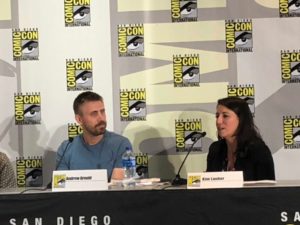
These are all things that we think about, and I think for graphic novels in general, we try to make it a little bit more visual so we might do more on social media than we would do necessarily for a novel. We might look at GIFs or shorter trailers because the longer ones really aren’t working as well anymore. Anything that we can do really showcase the artwork in a bigger and better way. We do a lot of characters, bringing them to life trying to show a little bit of the story. We pay a lot of attention to teachers and librarians. We know that the gatekeepers are really how kids get to the books to begin with. So we market a lot at school library references as much as we would here at Comic Con. So it’s a different approach depending on what the book is.
We try to not look at something as being age twelve. So we have to say, well you know we’re putting out a lot of it. I try to figure out is that an eighth grader? Is it actually a seven year old who’s going to be reading up a little bit more? Who is the story actually for? And then we try to go after them. We do think a lot about sales distribution. So is this a book that is going to be primarily in libraries? Is it a book that is going to be an indie favorite? Do we need to have a campaign that’s really going to embrace independent bookstores? Is it going to be something that’s going to land in Target in a bigger way? That’s a different consumer that’s anonymous by demand. They might come around the corner, and can they be able to pick something up that’s going to have to have a different cover? So we try to be smart about that.”
Final Thoughts
While sales for middle grade graphic novels are booming, the publishers see potential for growth in the YA market. As for future trends in middle grade and YA graphic novels publishing, each of the editors see the age of the superhero on the wane as public interest shifts towards the realistic.
“I think an interesting thing to watch in the coming year to two years is you’re going to see the Hollywood pick up our kind of graphic novel,” explained Siegel. “These authors are not capes types that are great. And nothing against a superhero. It’s one flavor, and there’s a lot of stuff in it. In Hollywood it’s just now registering on the radar of all the studios. The inquiries we’re getting are very different. This stuff that’s now in development, some of this we’re going to be seeing probably by next Comic Con. And that’s going to be a shift. In terms of YA there are these categories on the horizon. I think you’re going to see that this kind of graphic novel that some librarians call the new mainstream, which is not a brand, it’s not a particular kind of superpower or something, it just works by voices.”


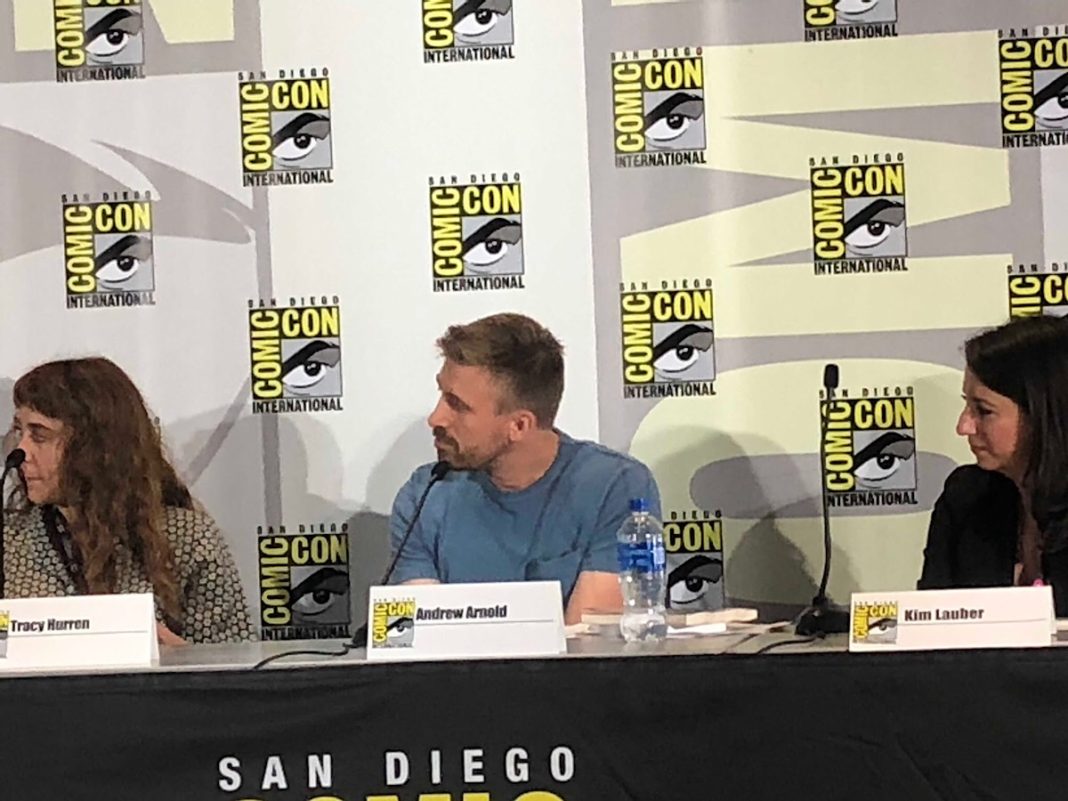
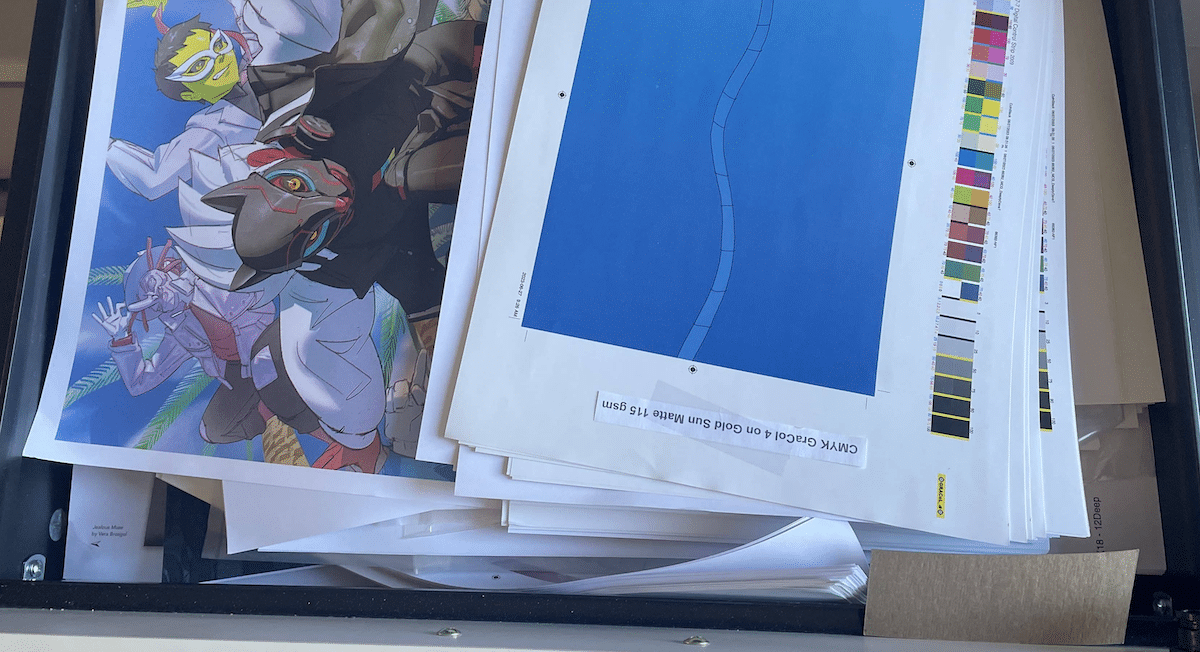
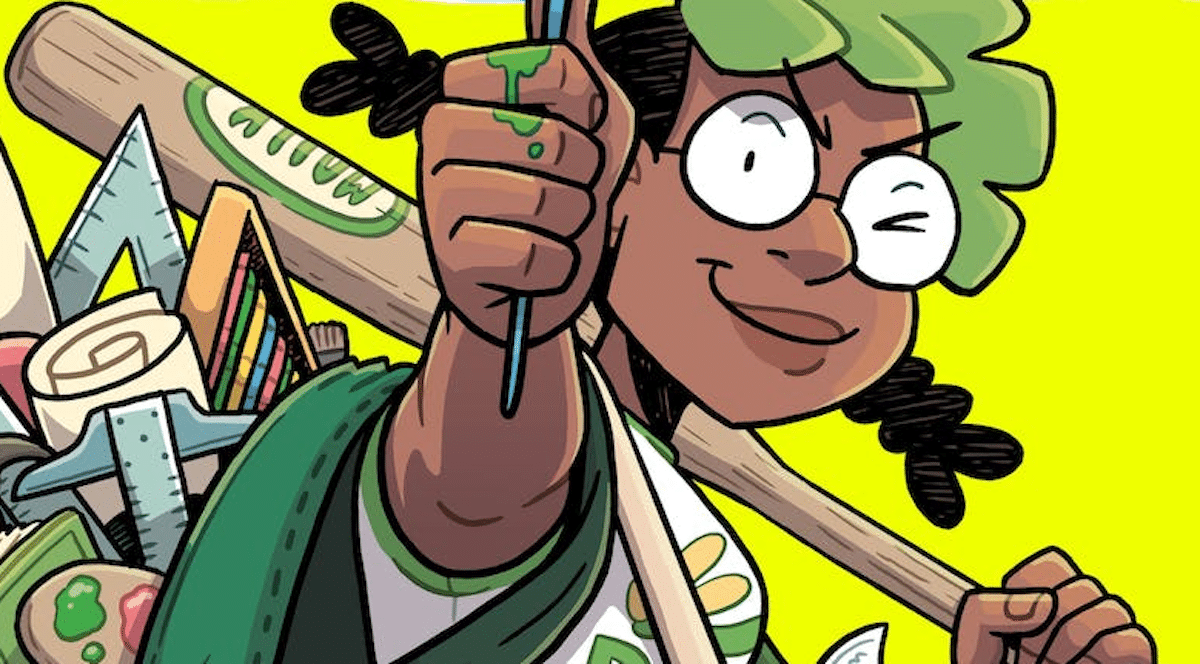




Comments are closed.